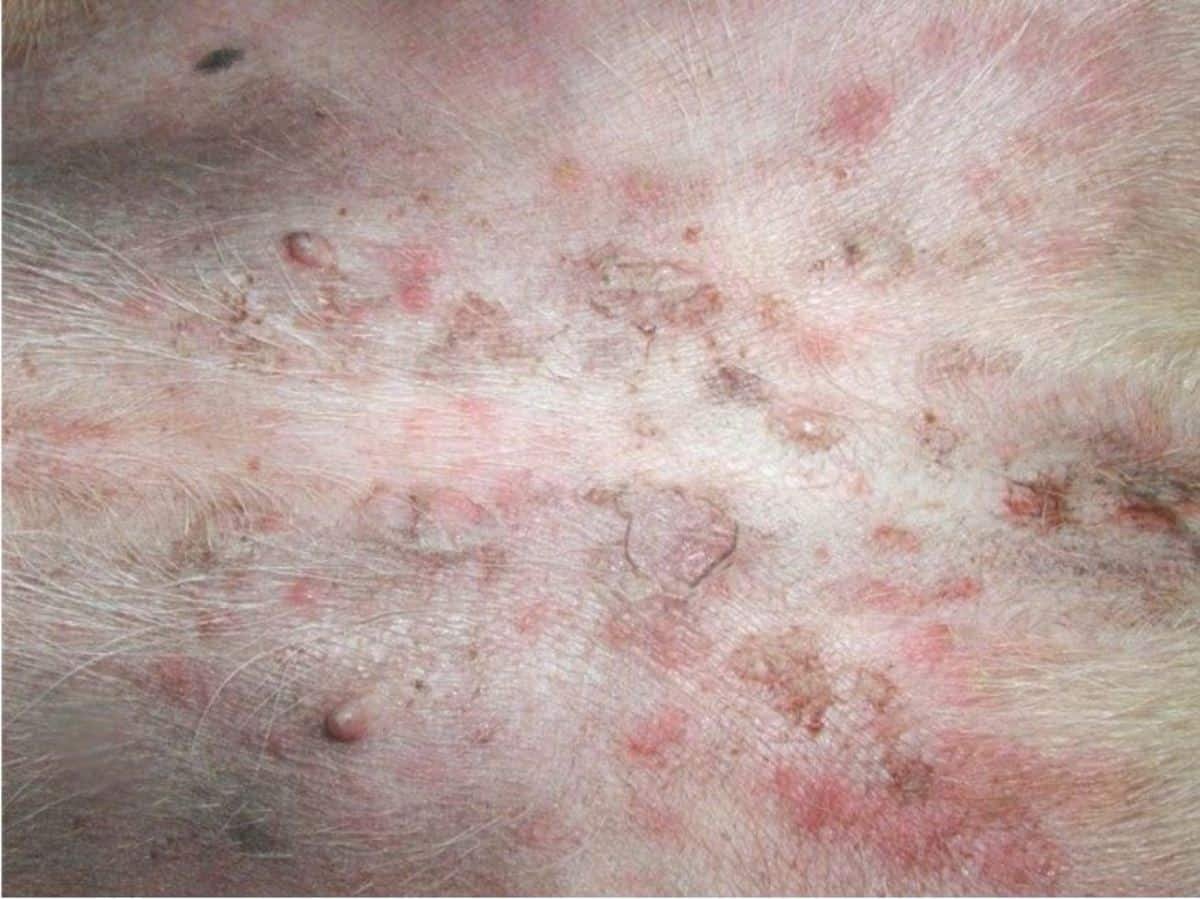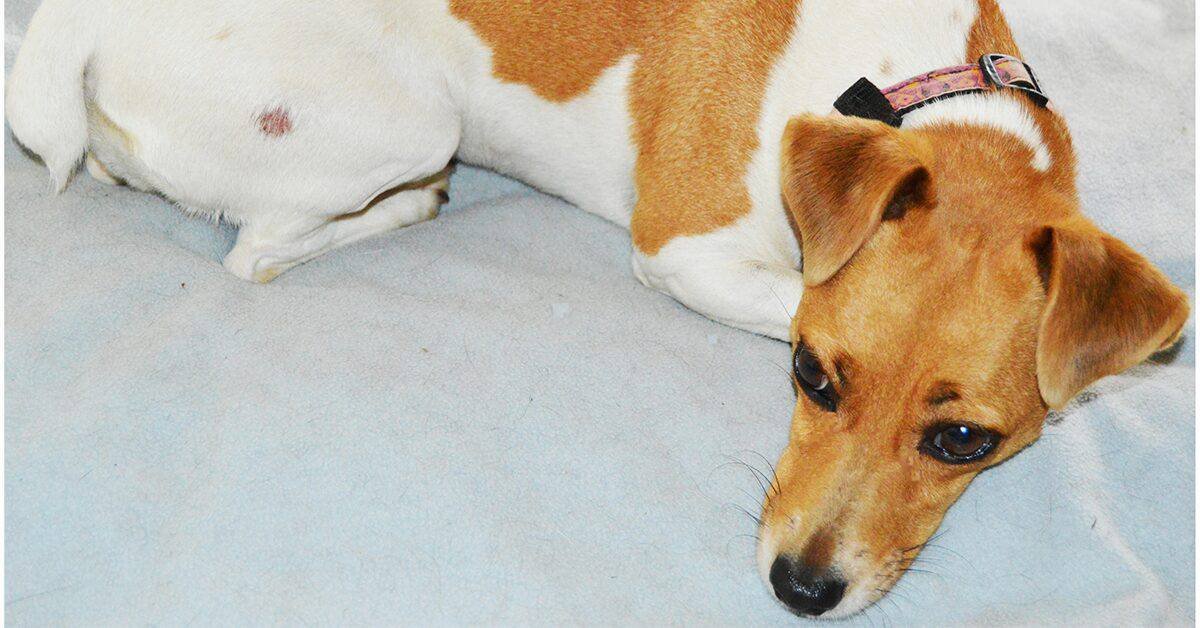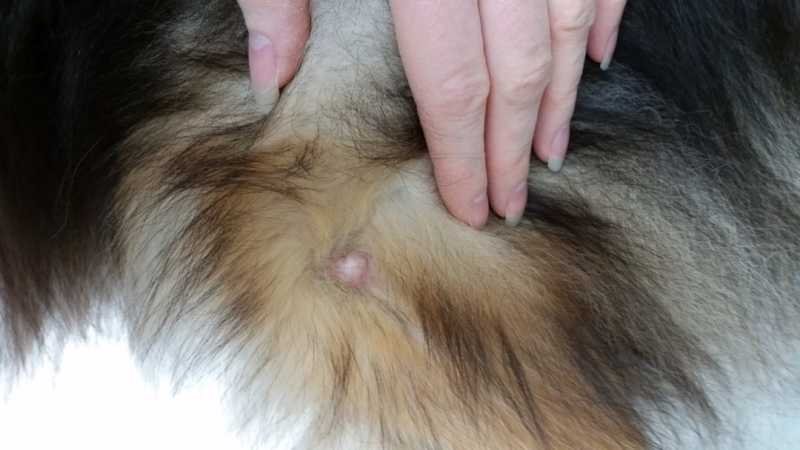Dogs, just like humans, can suffer from a variety of skin problems that can cause discomfort and even pain. Some common skin issues in dogs include allergies, infections, and parasites. These problems can manifest as rashes, lesions, and excessive scratching or biting at the skin. In severe cases, they can even lead to hair loss and inflammation. It’s important for pet owners to be aware of the signs of skin problems in their dogs and to seek veterinary care when necessary. we’ll take a closer look at some of the most common skin disorders in dogs and how they can be treated.
Allergic dermatitis | Skin Disorders

Allergic dermatitis is a common condition in dogs that causes inflammation of the skin. It is usually caused by an allergic reaction to something in the environment, such as pollen, mold, or dust mites. Symptoms of allergic dermatitis may include red, itchy skin, rashes, and hair loss. If your dog is showing such type of signs, it is important to have them seen by a veterinarian as soon as possible. The veterinarian will be able to identify the cause of the allergy and recommend treatment, which may include medications, special shampoos, and dietary changes. Also important to try to reduce your dog’s exposure to the allergens that are causing the reaction.
Yeast Infections

Yeast infections are a common problem in dogs, especially those with long ears, such as Basset Hounds, Cocker Spaniels, and Labradors. Symptoms of a yeast infection in dogs may include:
- Itching, scratching, and biting at the affected area
- Red, inflamed skin
- Odor
- Dark, crusty discharge
- Hair loss
If you think your dog may have such type of infection, it is important to consult your veterinarian. They will be able to diagnose the infection and recommend treatment options, which may include antifungal medications and changes to your dog’s diet. In severe cases, the infection may need to be treated with topical or oral antifungal medications.
Folliculitis | Skin disorders in dogs

It is an inflammation of the hair follicles in the skin. It can occur in dogs as a result of various causes, including bacterial or fungal infections, allergies, or irritation from grooming products or foreign objects. Symptoms of folliculitis in dogs may include redness, swelling, and pus-filled bumps on the skin, as well as itching and discomfort. In severe cases, the hair may fall out and the skin may become thickened or scarred. If you suspect that your dog has folliculitis, it is important to consult your veterinarian for proper diagnosis and treatment.
Impetigo | Skin disorders

Impetigo is a skin infection that is caused by bacteria. It is a common condition in dogs and can occur anywhere on the body. Signs of impetigo in dogs include the appearance of red, crusty lesions on the skin, which may be itchy. The lesions may also secrete a thick, yellow discharge. The vet will likely prescribe antibiotics to clear up the infection and may recommend medicated shampoos or other topical treatments to help soothe the affected area.
Seborrhea | Skin disorders

Seborrhea is a skin condition that causes excessive production of sebum, the oil produced by the sebaceous glands. In dogs, it can be either primary (meaning it is not caused by another condition) or secondary (meaning it is a result of another condition, such as allergies or hormonal imbalances). It can cause symptoms such as dry, flaky skin, greasy or oily skin, and a strong, unpleasant odor. It can also lead to the development of skin infections.
Ringworm | Skin disorders

It is a fungal infection that can affect both humans and animals, including dogs. It is characterized by circular, red, scaly patches on the skin that may or may not be itchy. Ringworm is highly contagious and can be transmitted from animals to humans, so it is important to take precautions to prevent the spread of the infection.
In dogs, it can be treated with antifungal medications, which may be applied topically or given orally. It is also important to thoroughly clean and disinfect the affected area and any objects that may have come into contact with the fungus to prevent the spread of the infection.
Alopecia | Skin disorders in dogs

Shedding and hair loss in dogs is a common occurrence that can have a variety of causes, including genetics, allergies, infections, and hormonal imbalances. Hair loss can be localized (affecting only certain areas of the body) or generalized (affecting the entire body). In some cases, alopecia is normal and temporary, such as when dogs shed their winter coat in the spring. However, excessive shedding and hair loss can be a sign of a medical problem that requires attention from a veterinarian.
Mange (Mites)

Mange is a skin disease caused by mites. Several types of mange can affect dogs, including:
- Sarcoptic mange: This type of mange is caused by the Sarcoptes scabies mite. It is highly contagious and can be transmitted to other animals and humans. Symptoms include intense itching, redness, and crusting of the skin.
- Demodectic mange: This type of mange is caused by the Demodex mite. It is not contagious and is more common in young dogs with weakened immune systems. Indications include hair loss, redness, and crusting of the skin.
- Cheyletiella mange: This type of mange is caused by the Cheyletiella mite. It is highly contagious and can affect multiple animals in a household. Signs include itching, scaly skin, and dandruff-like flakes on the coat.
Treatment for mange may include medicated baths, topical creams, and oral medications. It is important to follow the instructions of a veterinarian to ensure that the mites are fully eradicated and to prevent the recurrence of the infestation.
Fleas | Skin disorders in dogs

Fleas are small, wingless insects that can live on dogs and other pets, as well as in homes and yards. They feed on the blood of their hosts and can cause itching, skin irritation, and allergic reactions in dogs. It can also transmit diseases and parasites to dogs. If you think your dog may have fleas, you should consult a veterinarian for proper diagnosis and treatment. In the meantime, there are steps you can take to prevent or control fleas on your dog, such as using a flea preventative medication, regularly grooming your dog, and keeping your home and yard clean and free of debris.
Color or Texture Changes

There are several potential causes for changes in the color or texture of a dog’s coat. Some common causes include:
- Allergies: Dogs can develop allergies to certain foods or environmental allergens, which can cause changes in their coat. Symptoms may include dry, flaky skin, and itching.
- Hormonal imbalances: Changes in a dog’s hormones can cause changes in its coat. For example, an overactive thyroid gland (hyperthyroidism) can cause a dog’s coat to thin out, while an underactive thyroid gland (hypothyroidism) can cause a dog’s coat to become thicker and coarser.
- Infections: Bacterial or fungal infections can cause changes in a dog’s coat. These infections may be accompanied by other signs, such as redness, swelling, and itching.
- Nutritional deficiencies: A lack of certain nutrients in a dog’s diet can cause changes in its skin. For example, a deficiency in essential fatty acids can cause a dog’s skin to become dry and dull.
If you notice any changes in your dog’s skin, it’s important to have them evaluated by a veterinarian. They can help determine the cause of the changes and recommend the appropriate treatment.
Dry Skin

Dry, flaky skin on a dog can be caused by a variety of factors, including environmental conditions, diet, and underlying health issues. To help improve your dog’s skin and coat, you can try the following steps:
- Make sure your dog is getting enough fatty acids in their diet. These can be found in foods like fish and certain types of oils, or you can ask your veterinarian about supplements.
- Keep your dog well-hydrated by providing plenty of fresh, clean water at all times.
- Bathe your dog regularly with a moisturizing shampoo and conditioner. Be sure to use products that are specifically designed for dogs, as human products can be too harsh for their skin.
- Avoid using hot water when bathing your dog, as it can strip their skin of natural oils.
- Keep the air in your home humid, especially during the winter months when the air tends to be drier.
Consult your veterinarian if the problem persists or if you notice any other changes in your dog’s health. They can help determine the cause of dry, flaky skin and recommend the appropriate treatment.
Hot Spots

Hot spots, also known as moist dermatitis or pyotraumatic dermatitis, are a common skin problem in dogs. They are red, moist, and inflamed areas that can be painful and itchy. They are caused by a variety of things, including allergies, insect bites, poor grooming, and underlying medical conditions. Their treatment can be with medications, such as antibiotics and anti-inflammatory drugs, and by keeping the area clean and dry. It is important to address hot spots as soon as possible to prevent them from worsening and to help your dog feel more comfortable.
Skin Tumors

They are abnormal growths of tissue that can appear on a dog’s skin. They can be benign (non-cancerous) or malignant (cancerous), and they can occur at any age. Some common types of skin tumors in dogs include lipomas (benign fatty tumors), sebaceous gland tumors, and mast cell tumors. It is important to have any skin tumors evaluated by a veterinarian, as they can be a sign of underlying health issues and may need to be removed.
Acral lick Granuloma

Acral lick granuloma, also known as a lick granuloma or lick sore, is a skin lesion that occurs when a dog excessively licks a particular area on its body. These sores are usually found on the front of the legs, just above the paws, and can be caused by a variety of factors, including boredom, anxiety, and allergies. They can be difficult to treat, as the constant licking can cause the sore to become infected. Treatment may include medications to control inflammation and infection, as well as behavioral modification to help reduce licking behavior.


